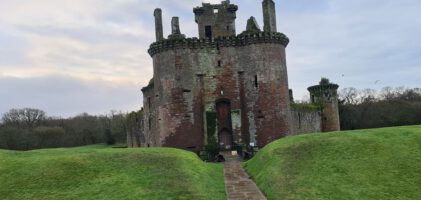Location: south of Dumfries, Dumfries and Galloway, Scotland
kind of castle: 13th century triangular castle (new one built out of the stones of the old castle)
today: open to visitors (old castle grounds can be visited as well, just a short walk from the new castle)
public transport: busses from Dumfries to Caerlaverock – Castle Rd End (connections to Dumfries from the rest of Scotland)
scheduled monument: yes
managed by: Historic Environment of Scotland
entrance fee: currently non since you can’t enter the site due to masonry improvements, check the website below for updated information
opening times: https://www.historicenvironment.scot/visit-a-place/places/caerlaverock-castle/prices-and-opening-times/
directions: Caerlaverock Castle – Google Maps
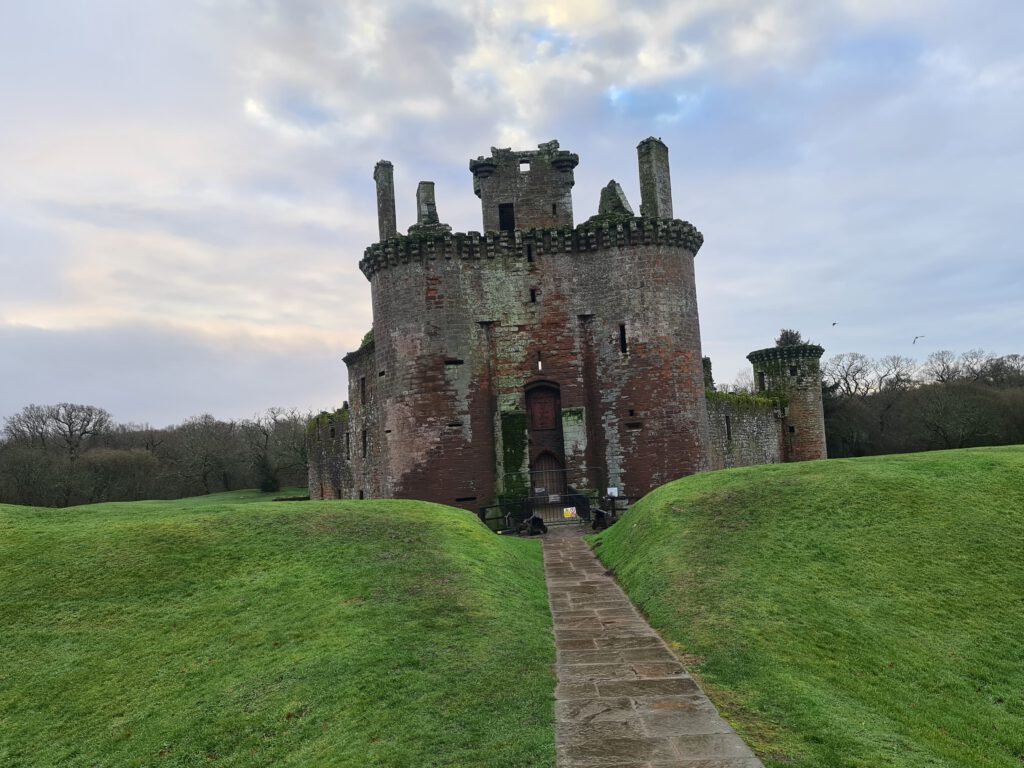
Caerlaverock Castle is one of the most iconic places in Scotland which is mostly due to its slightly unusual form. The 13th century stronghold of the Maxwell Clan is formed as a triangular surrounded by moats. Around 1640 it was partially demolished and has since then been basically out of use.
Located on the southern coast of Scotland it lies only about eleven kilometres south of Dumfries on the edge of a Nature Reserve. Originally built to control the trade in early times the Old castle is located a couple of hundred meters further to the south of what is referred to as Caerlaverock Castle these days.
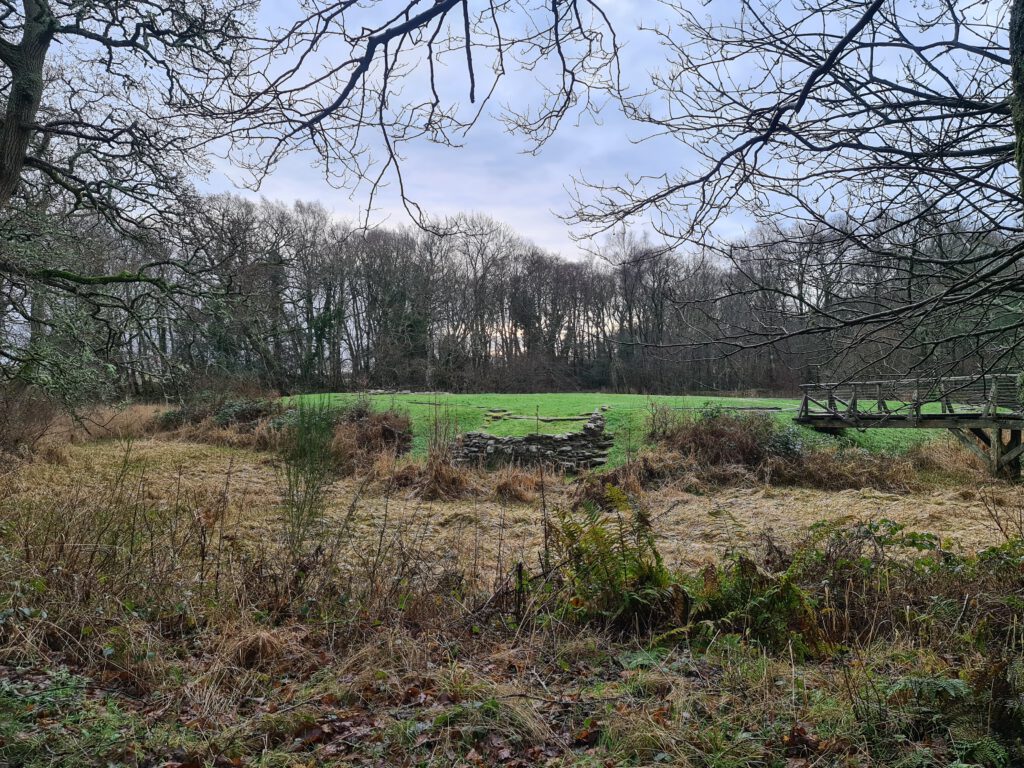
A harbour which would once have been linked to the Solway Firth was found immediately to the south of the old castle mound. This also showed that many of the buildings didn’t have real foundations but were instead built directly onto the natural silt and clay of the area which most likely would have made the walls move in antiquity. The way of building directly on silt and clay may have most likely been one of the reasons more the abandonment of the old castle.
Preceded not only by what I am referring to as Old Castle but also several other fortifications such as a Roman fort on Ward Law Hill and a British hill fort it is said that the King Gwenddoleu ap Ceidio died nearby at the Battle of Arthuret in 573 in the following causing his bard Myrddin Wyllt to go insane and retreat into the woods, inspiring the mystical character of Merlin.
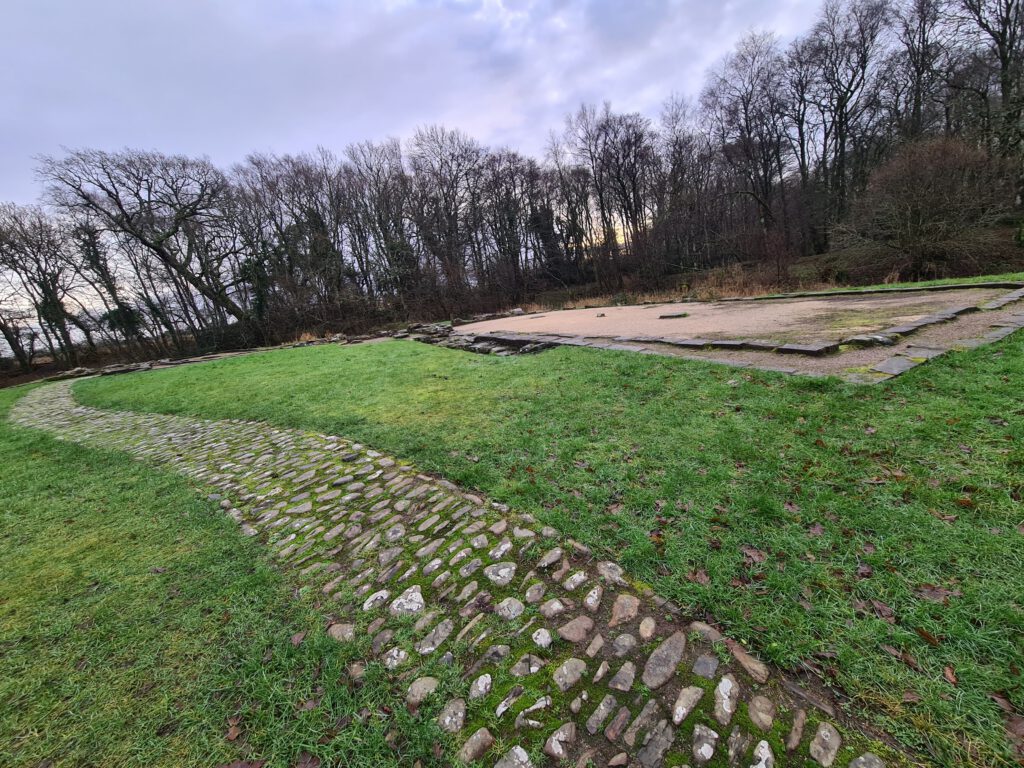
In the 11th century you can find the beginning of the Maxwell family line, starting with Undwin and his son Maccus, Maccus giving his name to his barony: Maccuswell or easier Maxwell. It was Maccus grandson who became the first Lord Maxwell of Caerlaverock and from him it passed on as it was costume back then, through the male line of the family.
Being succeeded by Herbert Maxwell of Caerlaverock it was Robert de Maxwell of Maxwell, Caerlaverock and Mearns who rebuilt Caerlaverock Castle.
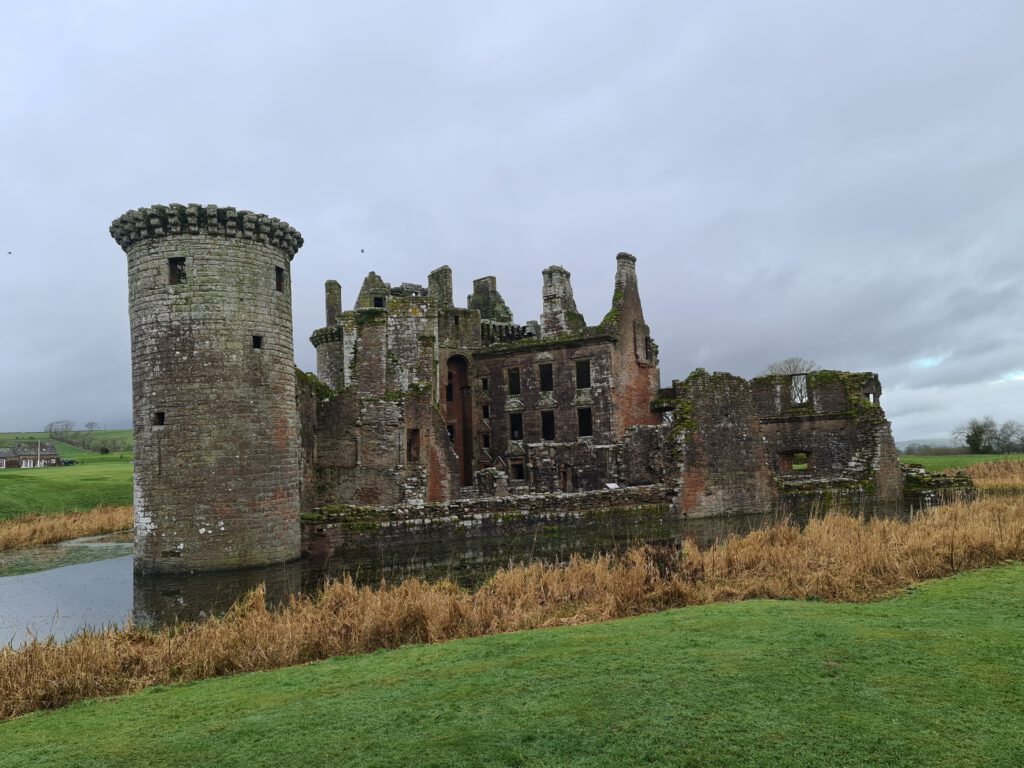
First mentioned around 1160 the lands of Caerlaverock originally belonged to the monks of Holm Cultram Abbey before Alexander II granted them to Sir John Maxwell around 1220 proclaiming him Warden of the West March. While Sir John Maxwell began working on the first castle he also served as Chamberlain of Scotland for three years. Being square in shape and belonged to the earliest stone castles in Scotland.
The original castle was surrounded by a moat and had a bridge facing north. Of this structure there are only the foundations and the remains of a wooden enclosure still visible. The structure is thought to having been abandoned for a rock outcrop in which region Sir John’s brother Sir Aymer Maxwell began constructing the present castle.
Sir John wasn’t the only Chamberlain in his family, with his brother following in his footsteps between 1258 and 1260 and four years later as Justiciar of Galloway. When the new castle was finished in the 1270s Herbert Maxwell who was John Maxwell’s nephew occupied it

During the wars of independence, the garrison of Caerlaverock attacked the English held Lochmaben Castle (post following soon) before it was put under siege by an English army. However, in the end, after being compelled to surrender, the whole English army was made a joke of. The Maxwells repelled several attacks by the army with only sixty men. Historic Scotland has started to organise reenactments of the siege in recent years which help people to understand the history a bit better by letting it get back to reality, while offering great fun for the younger ones involved.
Sir Eustace kept subsequent possession of the castle while changing allegiances all the time between John Balliol, Edward II and Robert Bruce before dismantling the fortress to keep it from falling into the hands of the enemies of Robert Bruce, for what he was rewarded.

Just a couple of years later in 1337 Sir Eustace once again inhabited the castle while changing sides again, this time supporting Edward Balliol. Not even twenty years later Sir Roger Kirkpatrick of Closeburn captured Caerlaverock for David II and again partly dismantled the castle.
In the mid-14th century, after the end of the Wars of Independence, the castle was regained by the Maxwells once more and Sir Robert rebuilt much of the castle between 1373 and 1410. During the 15th century there were further reconstructions and additions made.
After Mary Queen of Scots was forced to abdicate in 1567, Caerlaverock was besieged in 1570 by English Protestant forces and afterwards partly demolished again, most significantly the destruction of the gatehouse with gunpowder.

Another Lord Maxwell, John the 8th Lord Maxwell repaired the castle as a defence against the Johnstones of Annandale, by 1593. Here must be said that the Maxwells and Johnstones had quite a couple of feuds over the years.
By 1619 Robert, 10th Lord Maxwell was made Earl of Nithsdale by James VI of Scotland of whom he was a favourite and showing off his new position and fame he built the south and east ranges within the castle which to this day are known as the Nithsdale Lodging.
The religious turmoil within Scotland soon also reached the Catholic Maxwells when they were besieged by Protestant Covenanters in 1640, the siege lasted for 13 weeks and in the end the Maxwells were forced to surrender and following were all put to the sword, except the Earl and Countess of Nithsdale and their page. And as it was custom in those times, Caerlaverock Castle was once more demolished, the south wall and tower most badly, following this the castle was never repaired or reoccupied.
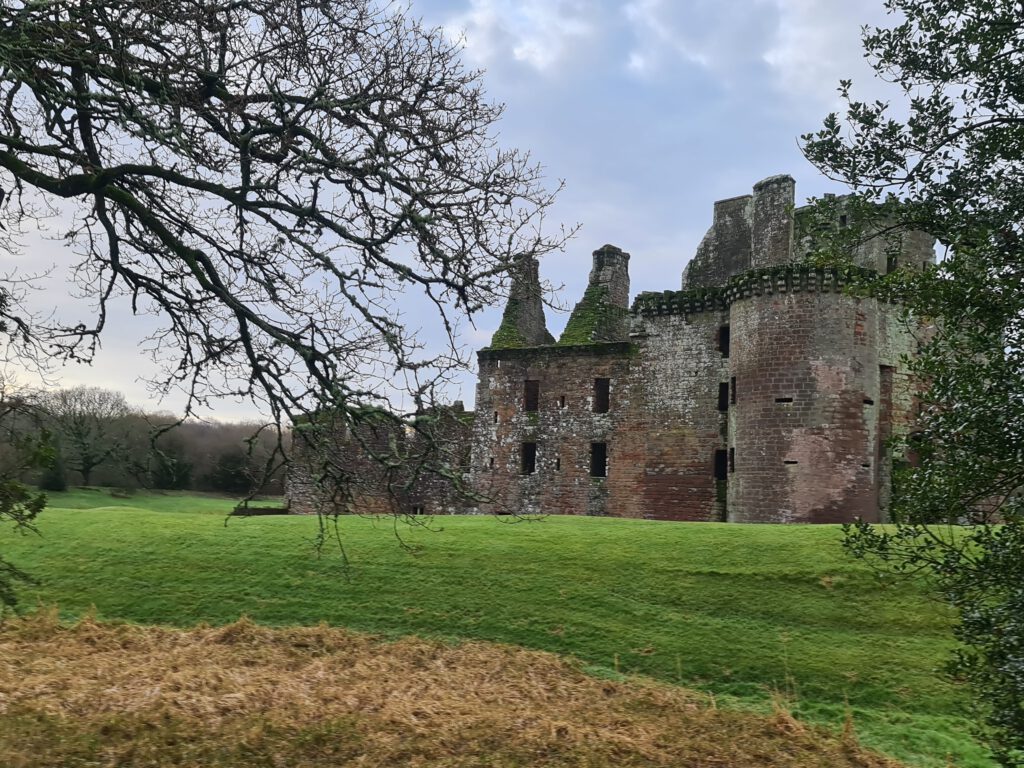
Maxwell may have died two years later but his son Robert Maxwell recovered the property alongside the earldom in 1647. He didn’t move back to Caerlaverock though, the Maxwells afterwards moved to Terregles before finally moving to Traquair House, the Caerlaverock estate passing by marriage to the Herries family before arriving in the hands of the Dukes of Norfolk.
Alongside its history of battles and feuds Caerlaverock or better said the surrounding estate referred to as Caerlaverock Nature Reserve has a lot to offer. 15 habitats in the grounds include semi-natural ancient woodland, swamps and ponds as well as unimproved grassland, providing the perfect location for many different species of birds and all sorts of animals as well as many plants which. All those habitats need protection as well as the remains of the castle since they are all part of the significant historical site and make the experience on the grounds complete.
To this day the castle is worth a visit, plan in a couple of hours to get a possibility to explore the surrounding Nature Reserve as well. When I visited the new castle was unfortunately closed due to masonry work. I also made the mistake of planning in to short a time period and so we just had a quick stroll back to the old castle and around the new one. Especially with the events taking place there at times it is truly a nice place to be and I can’t imagine a lot of locations I would prefer to get married at.

